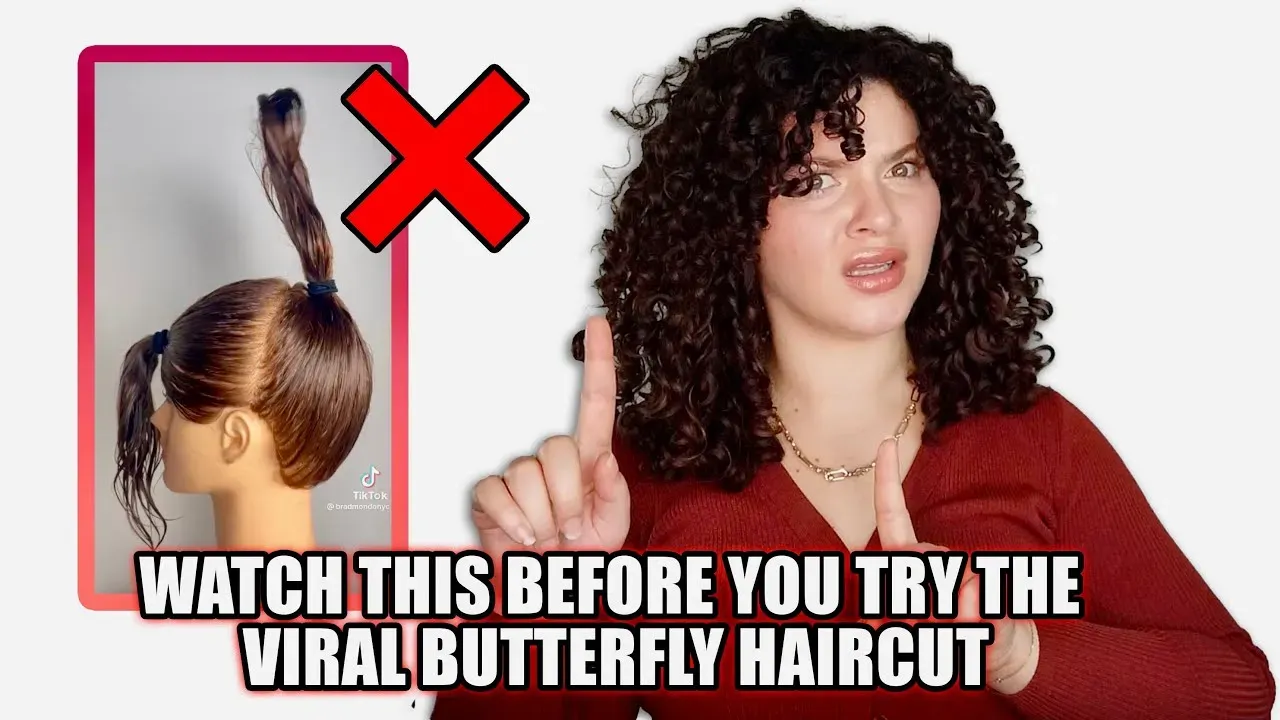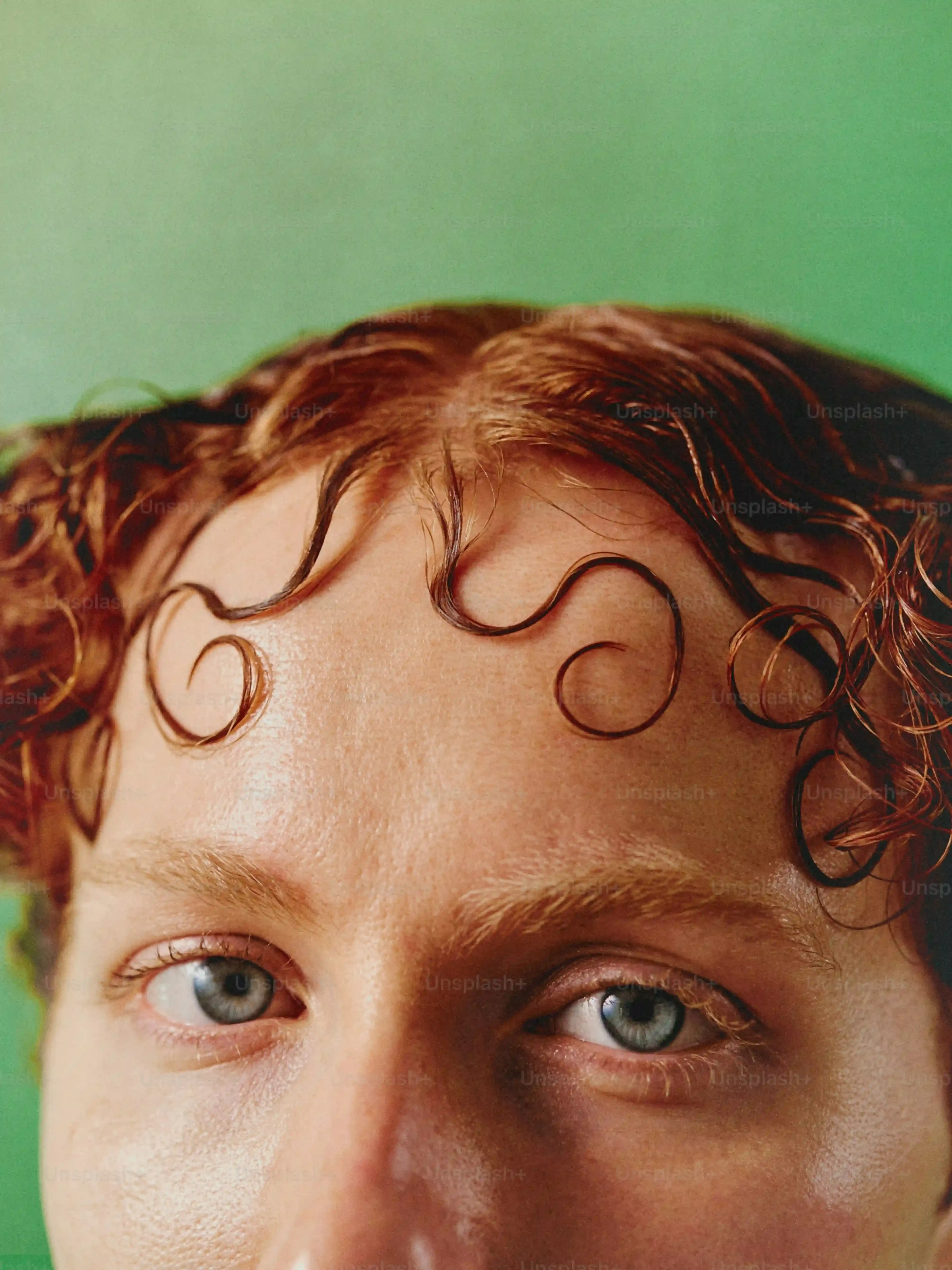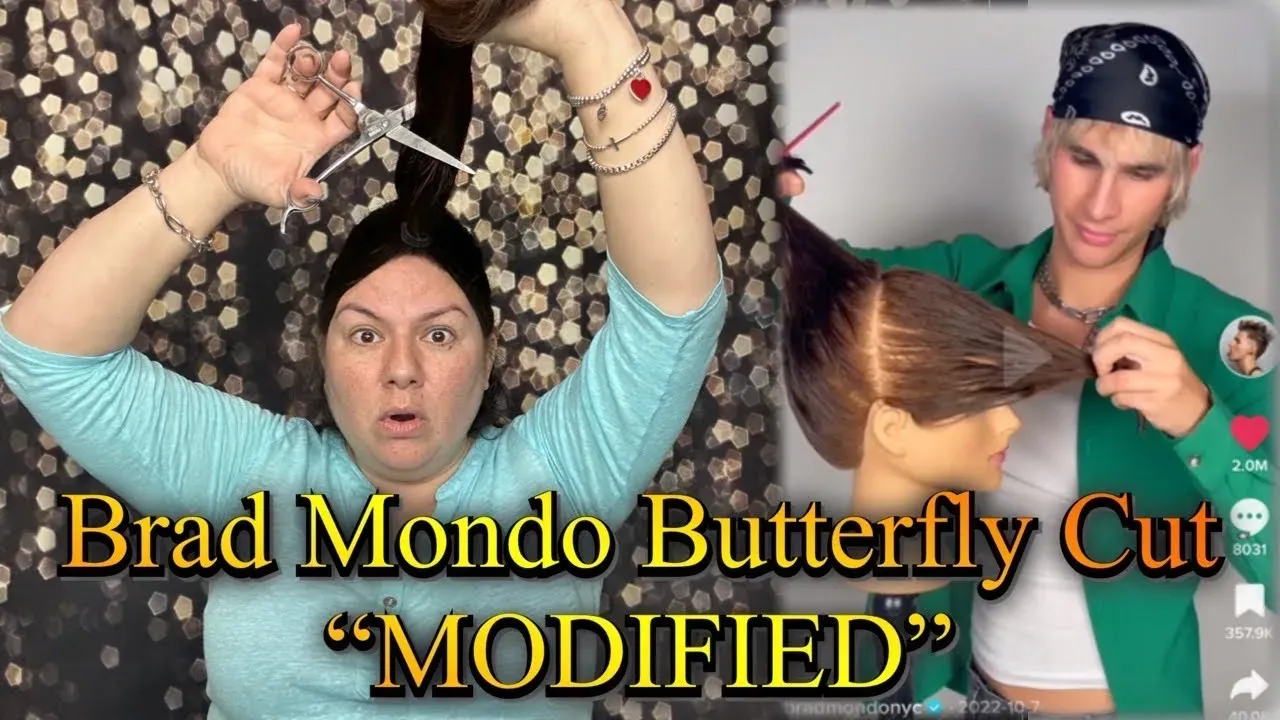Alright, let's talk about the siren song of the Brad Mondo butterfly cut, specifically when your hair decides to do its own thing and you've got curls. You saw the videos, right? Brad makes it look deceptively simple – snip here, snip there, and suddenly you have layers that frame your face like a dream. But if you’ve ever tried that on anything other than stick-straight hair, you might have ended up looking less like a layered goddess and more like you wrestled a weed whacker. Attempting the brad mondo butterfly cut curly hair often feels like a high-stakes gamble. Those bouncy, unpredictable coils don't follow the same rules as straight strands, and what works for one texture can spell disaster for another. This isn't just about cutting layers; it's about understanding how curls behave when weight is removed. We're going to dive into why this popular DIY method can be tricky with texture, what happens when you try it yourself, and when putting down the scissors and finding a pro is genuinely the better call. Get ready for a dose of reality, because gravity and curl patterns have zero respect for viral trends.
Understanding the Brad Mondo Butterfly Cut for Curly Hair

Understanding the Brad Mondo Butterfly Cut for Curly Hair
What Even IS the Butterfly Cut?
So, you've seen the videos. Brad Mondo, bless his heart, shows off this technique where you section your hair into two main parts – front and back – and cut them separately. The idea? To create face-framing layers in the front and longer, flowing layers in the back. When it's all down, the shorter pieces supposedly blend into the longer ones, giving this illusion of lots of layers without actually taking off much length from the overall look. Think of it like a shag cut's more polished, less committed cousin. It's designed to give volume and movement, particularly around the face, which sounds great in theory, especially for someone craving shape without sacrificing inches.
The Theory Behind the Snip
The core principle of the butterfly cut is overdirection. You pull sections of hair forward or backward before cutting. When you pull the front section forward and cut, those pieces will be shorter around your face and get progressively longer towards the back when they fall into place. The back section, often pulled up and cut, creates longer layers underneath. This technique is supposed to work wonders on straight or wavy hair, creating that soft, layered look that bounces and moves. It's a clever way to achieve significant layering with just two cuts, making it appealing for DIY attempts. But here’s where things get interesting, or rather, complicated, when you introduce curls to the equation.
Why Curls Don't Always Play Nice
Here's the cold, hard truth: curls shrink. They spring up. They have their own agenda. A technique based on cutting straight lines on straight hair doesn't always translate well to the unpredictable nature of curls. When you cut a curl wet and straight, you have no idea where it will land once it dries and coils up. You might cut what looks like a perfect face-framing layer, only for it to shrink up to your earlobe. Understanding the Brad Mondo butterfly cut curly hair involves accepting that the mechanics that work for straight strands simply aren't the same for textured hair. Each curl cluster behaves differently, and removing weight can either enhance the curl or completely disrupt its pattern, leading to awkward shelves instead of seamless layers.
Why Curly Hair Makes the Brad Mondo Butterfly Cut a Challenge

Why Curly Hair Makes the Brad Mondo Butterfly Cut a Challenge
Curl Patterns Have Minds of Their Own
Look, straight hair pretty much falls where you tell it to. You cut a line, it stays a line. Curls? Not so much. Every single curl, sometimes even on the same head, can have a slightly different pattern, tension, and direction. Trying to apply a one-size-fits-all cutting technique, like the one Brad demonstrates, ignores this fundamental reality. You might cut a section assuming it will lay a certain way, only for a stubborn curl clump to spring up or zig-zag unexpectedly. This unpredictability means the clean lines and seamless blending promised by the butterfly cut on straight hair often turn into disconnected layers and awkward lengths on curls. It's like trying to herd cats with a laser pointer – they just don't cooperate in the way you expect.
The Shrinkage Factor is Real (And Annoying)
This is perhaps the biggest hurdle. You cut a section of wet, stretched-out curly hair, and it looks like a decent length. Then, as it dries and those hydrogen bonds reform, *poof* – it shrinks, often significantly. This shrinkage isn't uniform either; tighter curls shrink more than looser waves. So, the "face-framing" layer you carefully measured might end up being an "ear-grazing" piece, or worse, an "oops, where did that go?" piece. The butterfly cut relies heavily on the *fall* of the hair once dry, and with curly hair, that final fall is a mystery until it's too late. You can't easily predict the finished length or shape when cutting wet, which is the standard for the butterfly cut method.
- Cutting wet doesn't show you the curl pattern's natural hang.
- Shrinkage varies drastically between curl types and even within the same head.
- The intended "seamless" layers can become choppy shelves due to curl spring.
- Weight removal affects curl formation – sometimes positively, sometimes negatively.
Density and Texture Variations Add Complexity
Curly hair isn't just one thing; it ranges from loose waves to tight coils, and density varies wildly. The butterfly cut removes weight, which can be great for reducing bulk in thick hair, but on finer curly hair, it might just make it look thin and stringy. Also, how curls clump together (their texture) plays a huge role. If you cut across a curl clump, you might break up its natural formation, leading to frizz or split ends. A technique designed for uniform straight strands doesn't account for the need to sometimes cut *into* or *around* curl clumps to maintain their integrity and encouraging definition. It's a nuanced process that a simple two-section cut often overlooks.
DIY Tips for the Brad Mondo Butterfly Cut on Curly Hair

DIY Tips for the Brad Mondo Butterfly Cut on Curly Hair
Alright, so despite all the warnings about shrinkage and curl chaos, you're still eyeing those scissors and thinking, "Maybe *my* curls will behave differently when I attempt the brad mondo butterfly cut curly hair." If you absolutely must give it a go, let's be clear: this is less of a foolproof plan and more of an experiment where the results are highly variable. First, *never* cut wet hair if you have significant curl shrinkage; always cut dry, curl by curl, or at least section by section after it's styled how you normally wear it. This lets you see exactly where the curl falls and how much it springs up. Secondly, take tiny amounts off at a time. Think micro-trims, not big chops. You can always take more off, but you can't put it back on. It’s also crucial to understand that pulling the hair straight out and cutting might disrupt your curl pattern; consider techniques like 'curl by curl' cutting, which is designed specifically for texture, even if you're trying to mimic the *idea* of the butterfly shape. Trying to force a straight-hair technique onto curls is often where things go sideways.
When to Skip DIY: Professional Take on the Brad Mondo Butterfly Cut for Curls

When to Skip DIY: Professional Take on the Brad Mondo Butterfly Cut for Curls
Look, we've all been there, watching a mesmerizing DIY video and thinking, "How hard can it be?" When it comes to the brad mondo butterfly cut curly hair edition, the answer is often, "Harder than you think, possibly much harder." This is precisely when you should put down the shears and step away from the mirror. If your curls are precious to you, if you have significant variations in curl pattern or density, or if you've had past DIY haircut disasters that still haunt your dreams, a professional curly hair specialist is your lifeline. They understand shrinkage, they know how to cut curls dry and individually, and they can assess how removing weight will actually impact your specific curl pattern and overall shape. Trying to replicate a technique designed for straight hair on unpredictable texture is like trying to assemble IKEA furniture without instructions – you might get something resembling the picture, but it's probably won't stand up straight and might fall apart unexpectedly.
Brad Mondo Butterfly Cut and Your Curls: The Final Snip
So, you’ve seen the magic of the Brad Mondo butterfly cut and how it *should* look, but reality hits different when you add curls to the mix. Trying this specific technique on textured hair isn't just about following steps; it's navigating how curls spring, clump, and shrink, often in ways you can't predict until it's too late. While the allure of a quick DIY transformation is strong, especially with a trending cut, the potential for uneven layers, awkward lengths, and fighting your natural texture is significant. Sometimes, the money saved on a DIY attempt pales in comparison to the cost of fixing a haircut gone wrong. For many with curly hair, getting the desired face-framing layers and movement without sacrificing shape or volume requires a stylist who truly understands curl patterns and cutting techniques specifically designed for texture. Consider this less a cautionary tale and more a practical heads-up: scissors and curls demand respect, and sometimes, the best move is admitting defeat and booking an appointment.